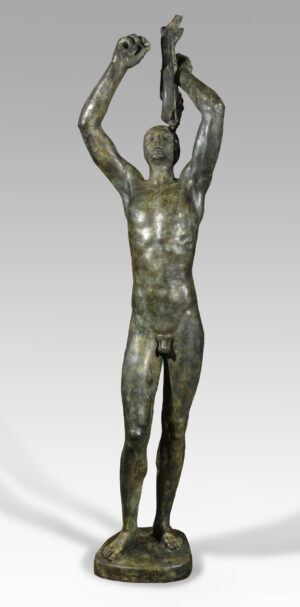Pierre-Alfred-Noël CAZAUBON
(1885-1979)
A carpenter’s son, originally from Pau, the artist is most surprisingly unheralded nowadays, while he quickly stood out during his lifetime for the quality and originality of his work.
On the occasion of the award he received in 1921, for good conduct during the war, we are told that he was working at that time with the sculptor Gabard on a fountain project for the avenue Thiers, in Pau, and that he regularly exhibited at the Société des amis des arts of this same town.
He subsequently settled in Paris, and it was at the 1929 Salon d’Automne that he really came to prominence with his Water Bearer, considered a revelation due to its “qualities of attentive simplicity and gentle modelling, though perfectly accurate”, as Le Temps underlined on November 5, 1929.
He then regularly displayed his artworks in various materials, stone, bronze or plaster at the Salon d’automne. He also took part with brio in exhibitions of Toulousain sculptors living in Paris, Guénot, Contesse, Parayre, Poisson and Wlérick, thereby contributing to the recognition of an independent Toulouse school that regenerated and revitalized the statuary art.
He won prizes at the 1930 and 1937 Exposition Universelle and, in 1947 received a Médaille d’Or in the Monumental art section of the Exposition internationale de l’habitation et de l’urbanisme, held at the Grand Palais.
As the State commissioned several of his sculptures, he is fairly well represented in French public collections (Musée de Pau, Musée d’Art Moderne de Paris, Centre National des Arts Plastiques…).

